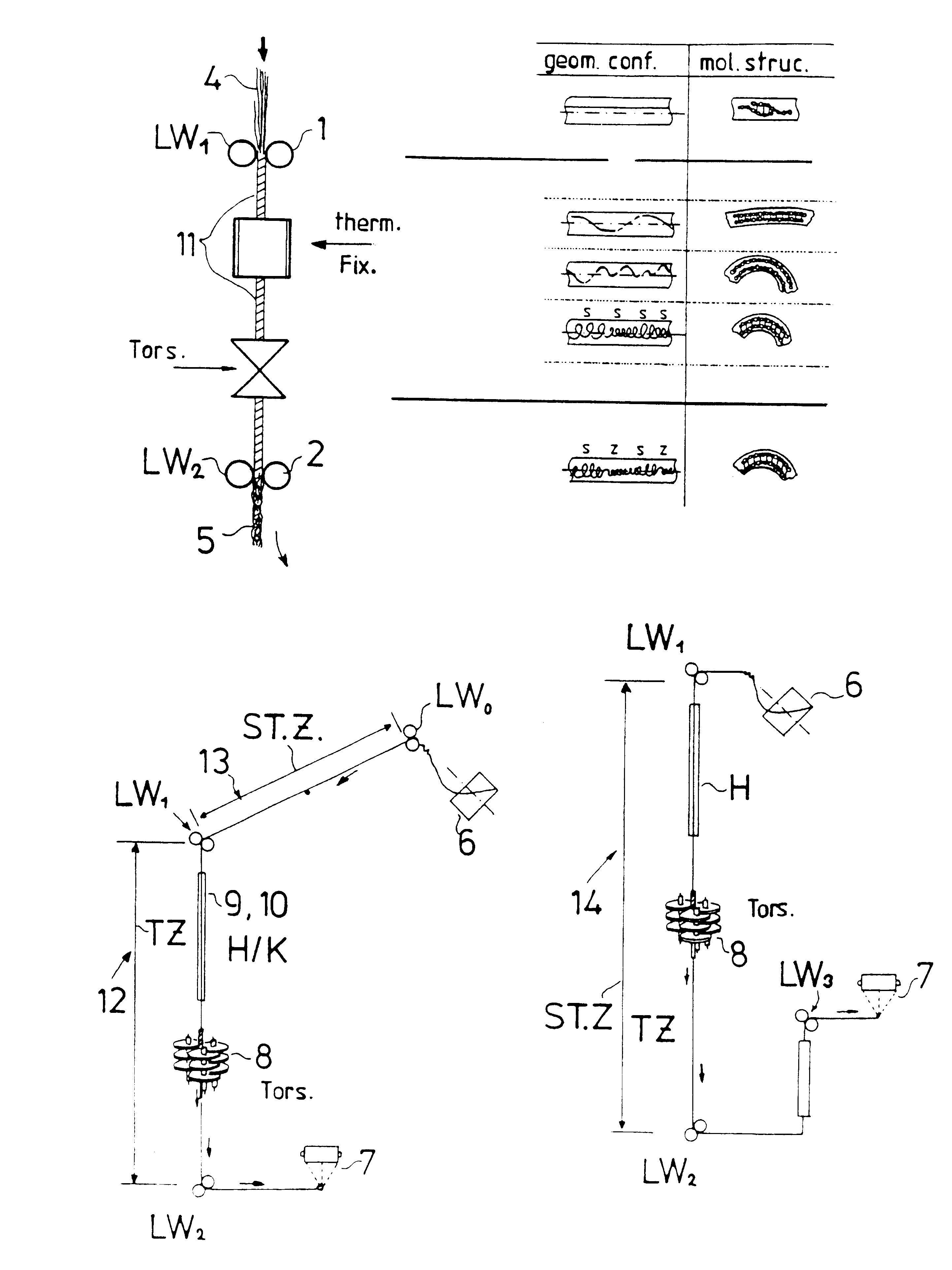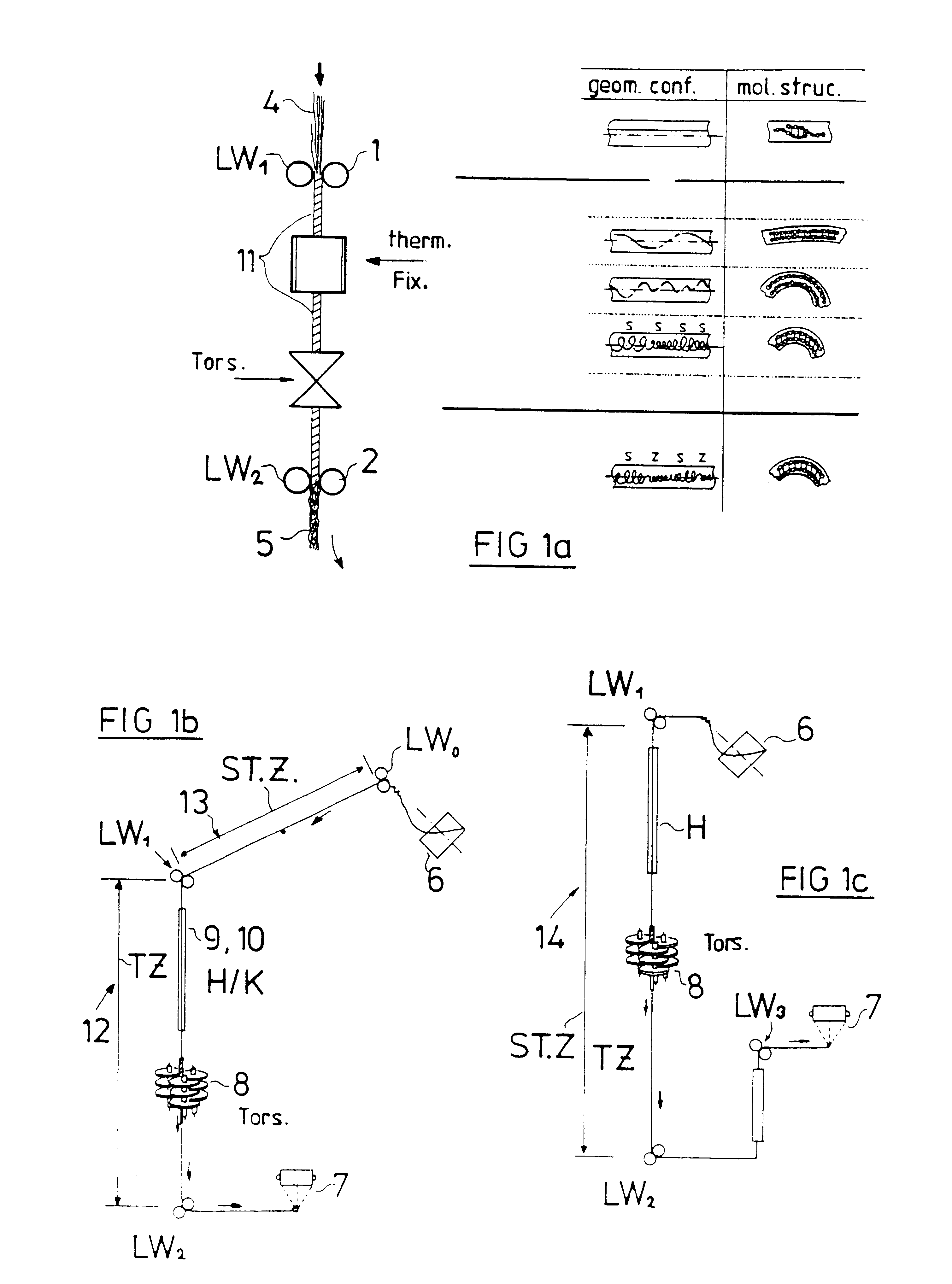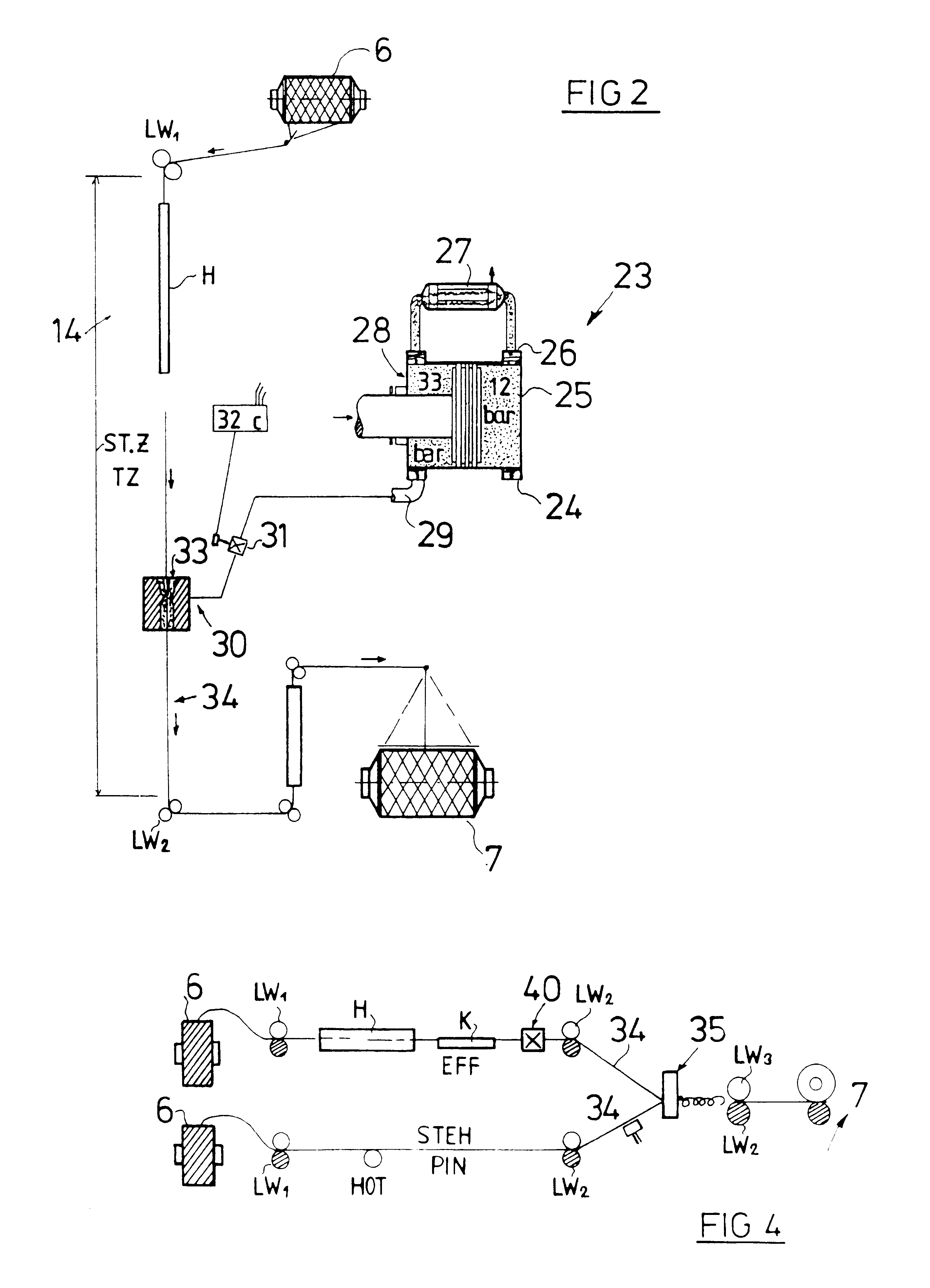Method and device for treating filament yarn with air
a technology of air treatment and filament yarn, which is applied in the direction of beaming machines, manufacturing tools, transportation and packaging, etc., can solve the problems of excessively large discrepancy between spinning rate and performance, natural limit of performance dictated, and surging, so as to increase air speed, increase production cost, and increase pressure
- Summary
- Abstract
- Description
- Claims
- Application Information
AI Technical Summary
Benefits of technology
Problems solved by technology
Method used
Image
Examples
Embodiment Construction
Reference will be made hereinafter to FIGS. 1a, 1b and 1c which show the current practice and the state of the art. The two basic process steps are emphasized in the left-hand half of FIG. 1a. These are torsion production (Tors) and heat setting. Smooth yarn 4 is supplied to the process via a feed unit 1 (LW1) and is taken off as crimp quality yarn 5 after the feed unit 2 (LW2). The smooth yarn 4 is taken from a supply bobbin 6 according to FIGS. 1b and 1c and rewound, for example onto a winding bobbin 7. A mechanical twister, for example a friction spindle 8, is used as twister. The heat setting means 3 (therm. Fix) consists essentially of a heater 9 (H) and a cooler 10 (K). The twister 8 acts throughout heat setting stage. The effect is shown symbolically as twisted yarn 11. However, as this is a false twist, it is removed again after the twister 8. The change in molecular orientation produced by the treatment is shown on the right of FIG. 1, on the one hand as an external geometr...
PUM
| Property | Measurement | Unit |
|---|---|---|
| pressure | aaaaa | aaaaa |
| pressure | aaaaa | aaaaa |
| pressure | aaaaa | aaaaa |
Abstract
Description
Claims
Application Information
 Login to View More
Login to View More - R&D
- Intellectual Property
- Life Sciences
- Materials
- Tech Scout
- Unparalleled Data Quality
- Higher Quality Content
- 60% Fewer Hallucinations
Browse by: Latest US Patents, China's latest patents, Technical Efficacy Thesaurus, Application Domain, Technology Topic, Popular Technical Reports.
© 2025 PatSnap. All rights reserved.Legal|Privacy policy|Modern Slavery Act Transparency Statement|Sitemap|About US| Contact US: help@patsnap.com



